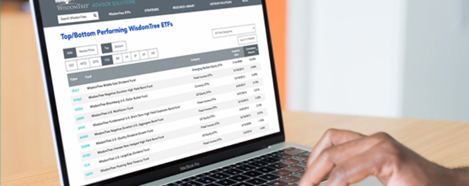One of the most important macro stories of the last 15 months has been the dramatic decline in the U.S. dollar. However, the changing of the guard in the White House, with the insertion of Larry Kudlow as Trump’s primary economic advisor, may be ushering in a very important strategic change in the currency markets and sentiment.
Register
Sign In
Register for access to exclusive content and industry insights.

Individual investors who register can access dashboard, daily blog posts, latest videos, podcasts and stay current with industry insights. On top of that, Financial Professionals get additional access to the tools, technology, resources and support they need to take the business to the next level.
Already Registered? Sign In.
Search WisdomTree
ETFs
Large Cap Core
Mid & Small Cap Core
Large Cap Value
Mid & Small Cap Value
Mid & Small Cap Growth
Emerging Markets
- DEM WisdomTree Emerging Markets High Dividend Fund
- DGRE WisdomTree Emerging Markets Quality Dividend Growth Fund
- DGS WisdomTree Emerging Markets SmallCap Dividend Fund
- EMMF WisdomTree Emerging Markets Multifactor Fund
- NTSE WisdomTree Emerging Markets Efficient Core Fund
- XC WisdomTree Emerging Markets ex-China Fund
- XSOE WisdomTree Emerging Markets ex-State-Owned Enterprises Fund
Regional/Single Country
International
- DWM WisdomTree International Equity Fund
- DWMF WisdomTree International Multifactor Fund
- DDWM WisdomTree Dynamic Currency Hedged International Equity Fund
- DOL WisdomTree International LargeCap Dividend Fund
- AIVI WisdomTree International AI Enhanced Value Fund
- DTH WisdomTree International High Dividend Fund
- IHDG WisdomTree International Hedged Quality Dividend Growth Fund
- IQDG WisdomTree International Quality Dividend Growth Fund
- NTSI WisdomTree International Efficient Core Fund
International Mid & Small Cap
Global
Regional/Single Country
Regional/Single Country Small Cap
Strategic Core/Core Plus
Government Strategies
Credit
Emerging Markets
Currency Strategies
Option-Based
Core
Megatrends
Siegel Collaboration Strategies
Government
Short-Term Government
STRATEGIES
Links List
PATH
RESOURCES
